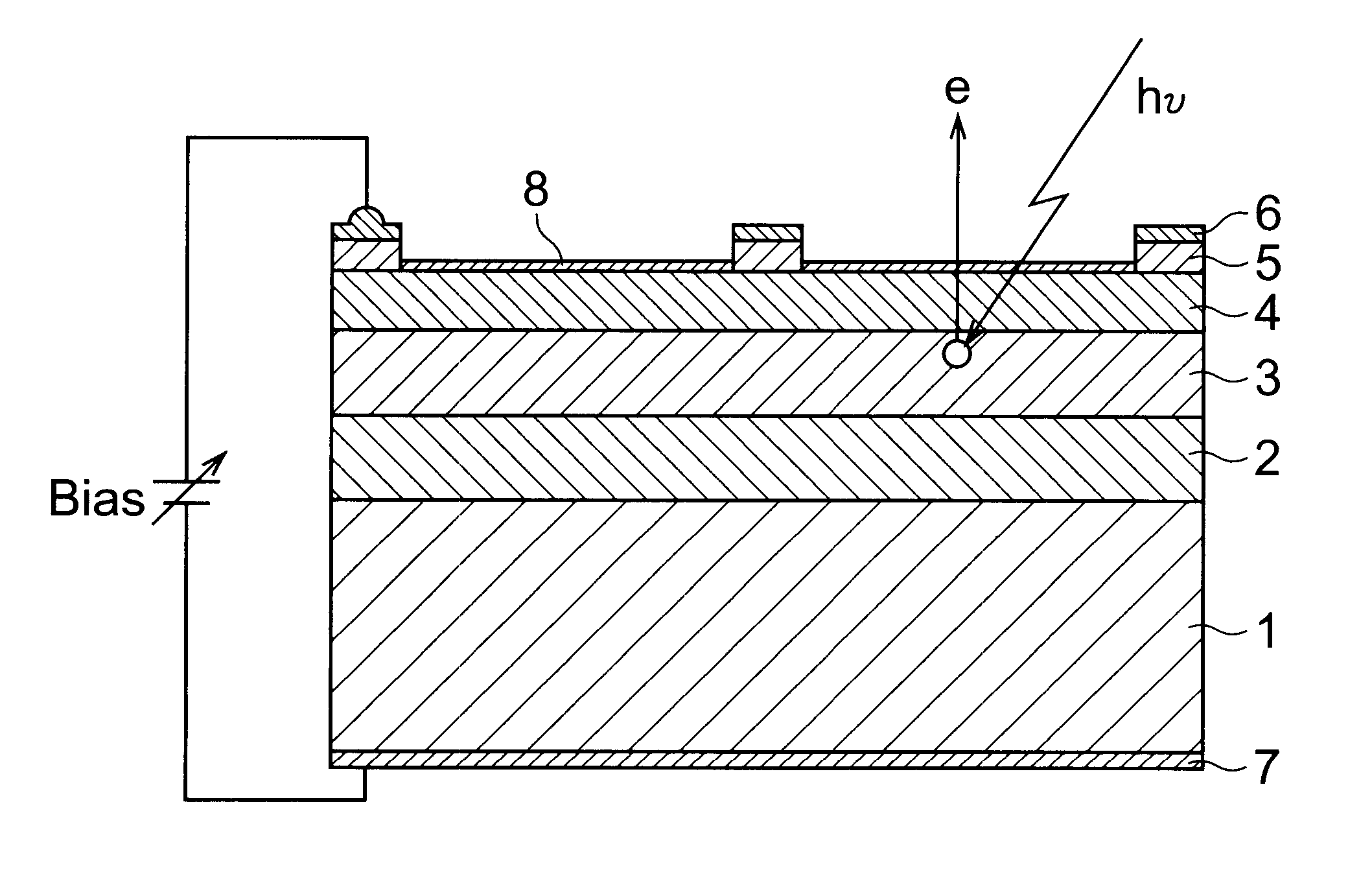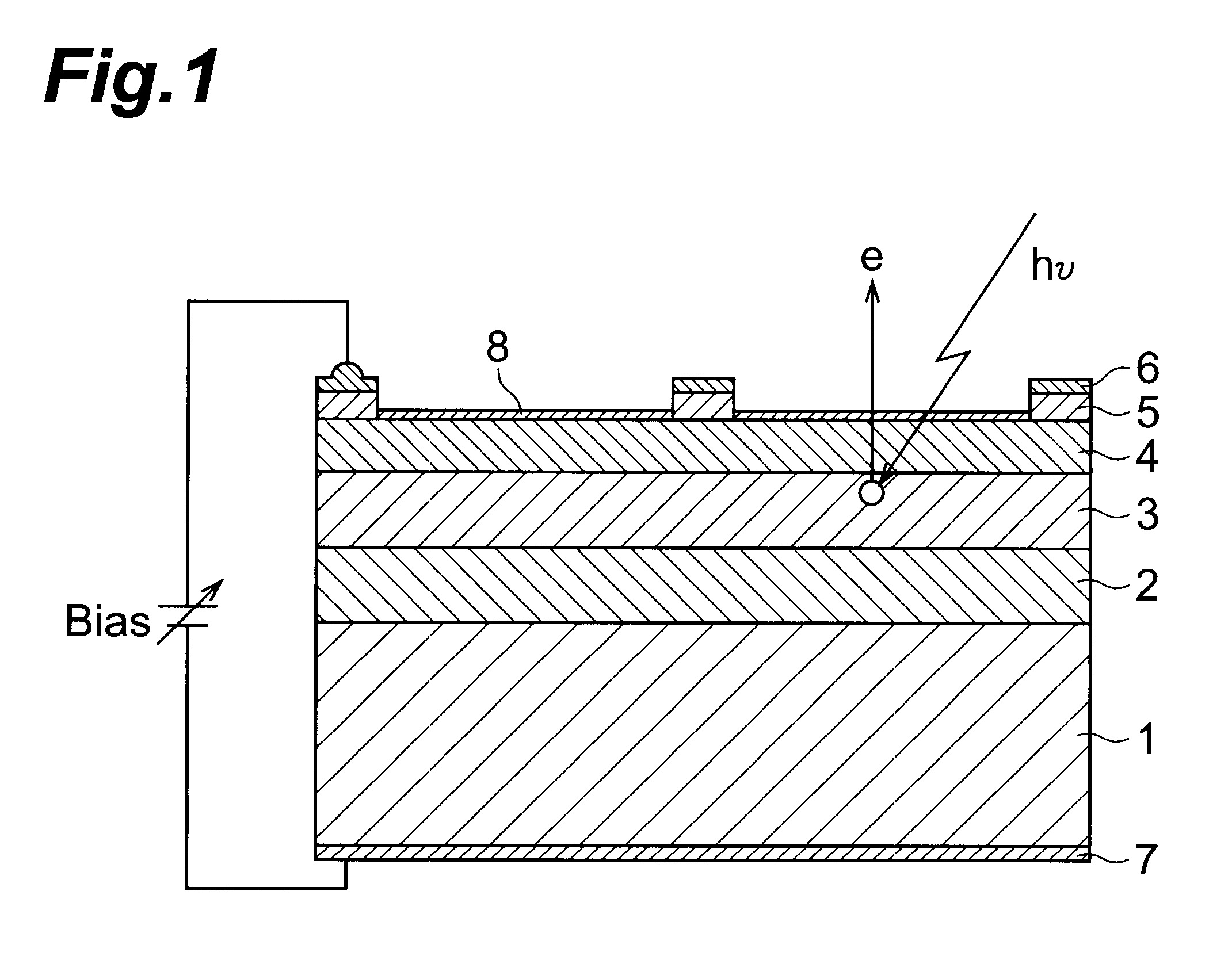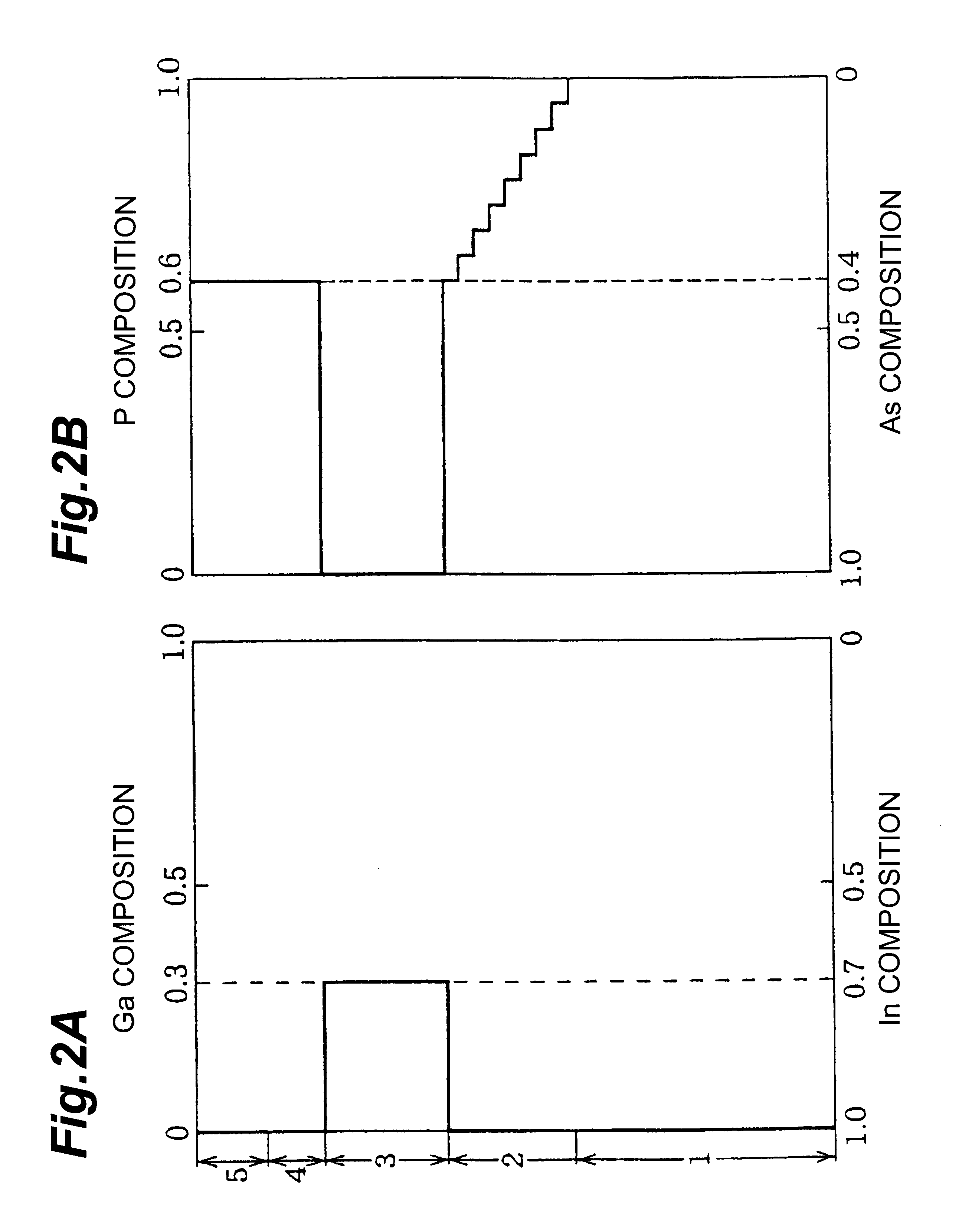Photocathode and electron tube
a photocathode and electron tube technology, applied in the field of photocathodes and electron tubes, can solve the problems of not being practicable, difficult to keep lattice matching at a wavelength of 1.7 .mu.m or longer and acquire reproducibility
- Summary
- Abstract
- Description
- Claims
- Application Information
AI Technical Summary
Benefits of technology
Problems solved by technology
Method used
Image
Examples
Embodiment Construction
made capable of detection up to a longer wavelength, and the respective modes disclosed in literatures 2 and 4 (hereinafter referred to as Conventional Examples 1 and 2, respectively).
Example 2 has a basic configuration identical to that of the first embodiment shown in FIG. 1, whereas the light-absorbing layer 3 is constituted by In.sub.0.82 Ga.sub.0.18 As so as to be capable of detection up to a longer wavelength. In order to lattice-match the light-absorbing layer 3 at the interface, the topmost surface of buffer layer 2 has a composition of InAs.sub.0.6 P.sub.0.4. Consequently, both have the same lattice constant of 5.990 angstroms as shown in FIG. 5. Similarly, the electron-emitting layer 4 and contact layer have a composition of InAs.sub.0.6 P.sub.0.4, so as to yield the same lattice constant, thereby achieving lattice matching.
FIGS. 7 and 8 are graphs comparing spectral sensitivity characteristics of Examples 1 and 2 and Conventional Examples 1 and 2, whose ordinates indicate...
PUM
 Login to View More
Login to View More Abstract
Description
Claims
Application Information
 Login to View More
Login to View More - R&D
- Intellectual Property
- Life Sciences
- Materials
- Tech Scout
- Unparalleled Data Quality
- Higher Quality Content
- 60% Fewer Hallucinations
Browse by: Latest US Patents, China's latest patents, Technical Efficacy Thesaurus, Application Domain, Technology Topic, Popular Technical Reports.
© 2025 PatSnap. All rights reserved.Legal|Privacy policy|Modern Slavery Act Transparency Statement|Sitemap|About US| Contact US: help@patsnap.com



